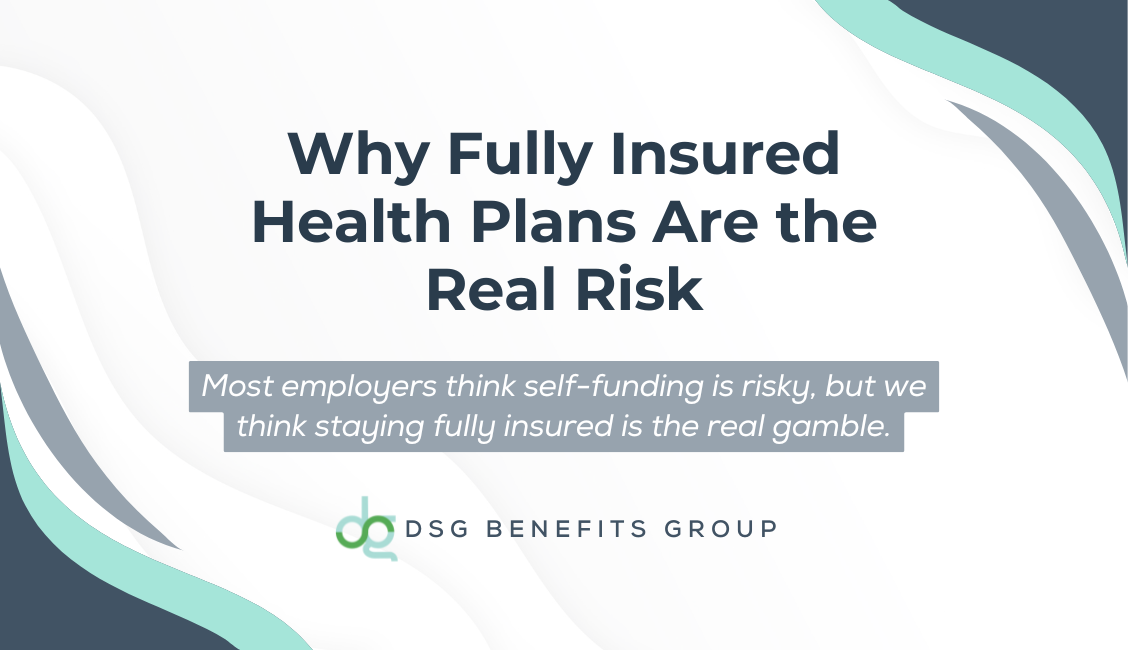Most employers think self-funding their health benefits is risky. I get it. The idea of taking on direct responsibility for employee medical claims can seem daunting. But the fact is, staying with fully insured plans is the bigger gamble with your company’s financial future.
Let’s walk through why fully insured health plans expose your business to more risk than you realize, and what some alternatives look like.
The Certainties of Fully Insured Coverage
Guaranteed Premium Increases
With fully insured plans, you’re signing up for one certainty: your premiums will increase. Not might increase, will increase.
These increases happen regardless of your company’s actual claims experience. Your employees could be the healthiest group in the state, and you’ll still pay more next year.
Why?
Because you’re subsidizing the carrier’s less profitable accounts, their administrative costs, their profit margins, and their reserves.
Zero Visibility Into Your Costs
When renewal time comes around, your broker presents an increase, mentions “medical inflation” and “market conditions,” but you have no access to your actual claims data to verify anything. You’re making decisions about your second or third largest business expense while flying completely blind. That’s not risk management, that’s gambling.
No Control Over Plan Design
Fully insured plans lock you into rigid structures. You’re forced into a one-size-fits-all approach that rarely fits anyone well.
What You’re Paying For
When you pay fully insured premiums, you’re not just covering your employees’ medical costs. You’re also paying for carrier profit margins, administrative overhead, premium taxes, and reserves for other groups.
In a self-funded arrangement, you eliminate many of these extra costs.
Alternative Funding: Level-Funded Plans
If traditional self-funding feels like too big a leap, level-funded plans offer a middle ground.
You pay a fixed monthly amount (like fully insured), but you’re only paying for:
- Expected claims costs
- Administrative fees
- Stop-loss premiums
- Small profit margin for the third-party administrator
At year-end, if your claims come in lower than expected, you get money back. If they’re higher, your stop-loss coverage protects you.
Alternative funding arrangements give you:
- Visibility into your actual costs
- Control over plan design
- Ability to implement targeted cost-saving strategies
- Potential for significant savings when claims run favorably
Take Action
Fully insured health plans guarantee three things: premium increases, lack of transparency, and limited control. Can you afford to keep subsidizing insurance carrier profits while your costs spiral out of control?
If you’re tired of accepting arbitrary premium increases and want to take control of your health benefit costs, it’s time to explore your options. Self-funding and level-funding aren’t right for every organization, but they’re worth serious consideration for most employers spending more than $500,000 annually on health benefits.
Don’t let fear of the unknown keep you trapped in a system designed to enrich carriers at your expense. The biggest risk is doing nothing while your costs continue climbing year after year.
DM me for more information about how alternative funding could work for your organization.

